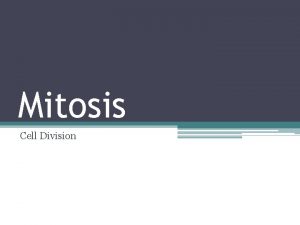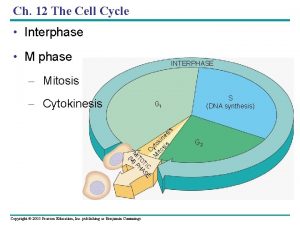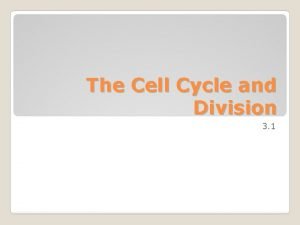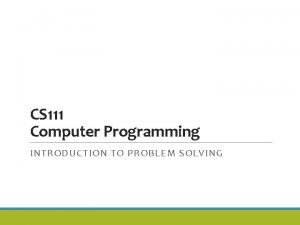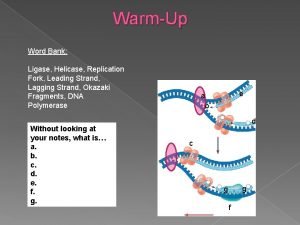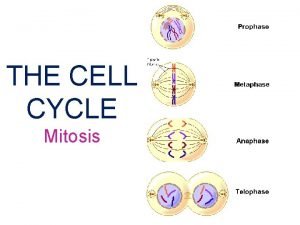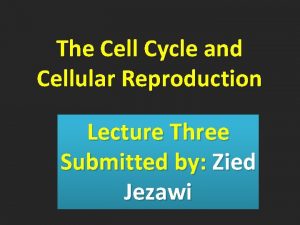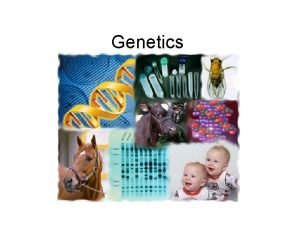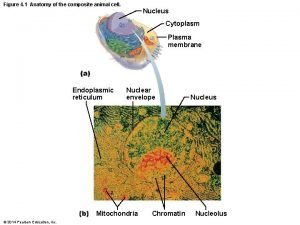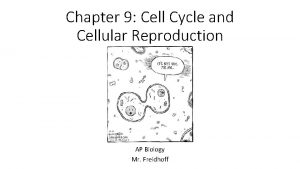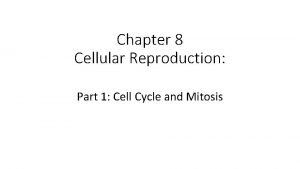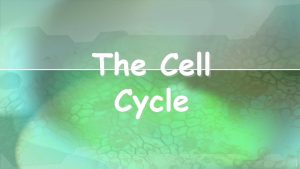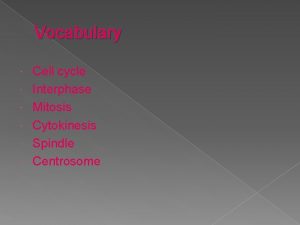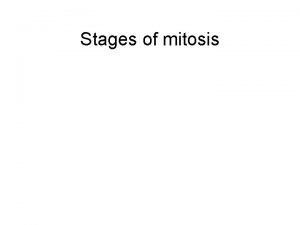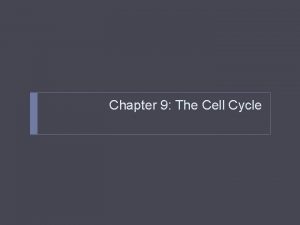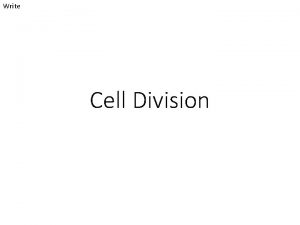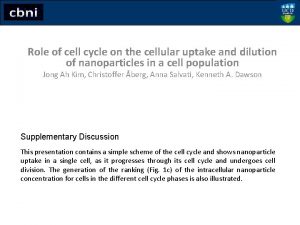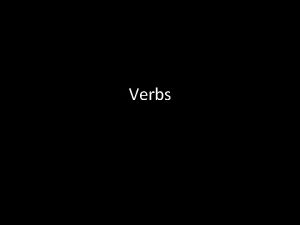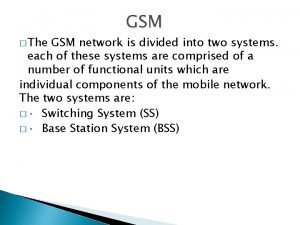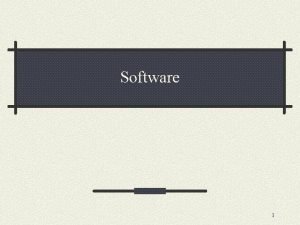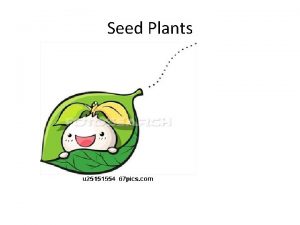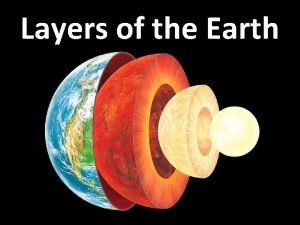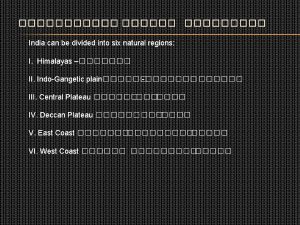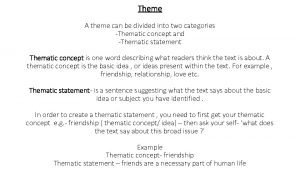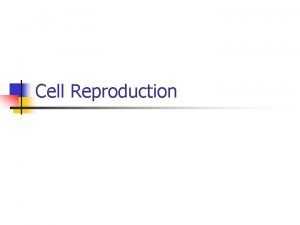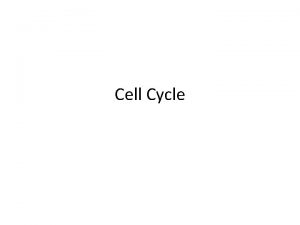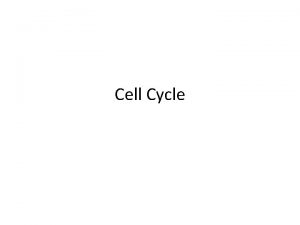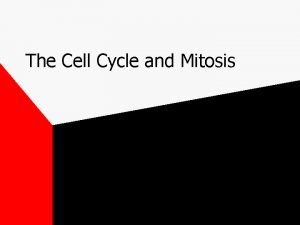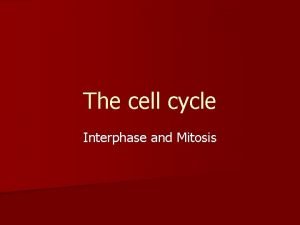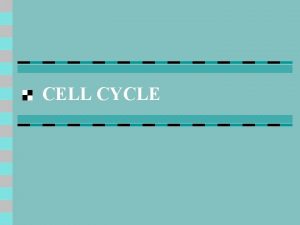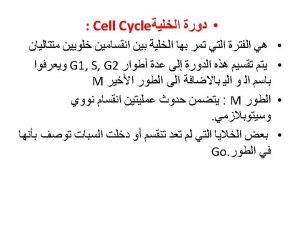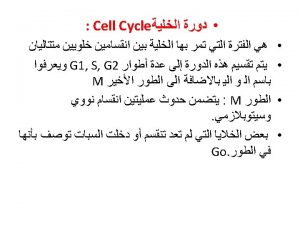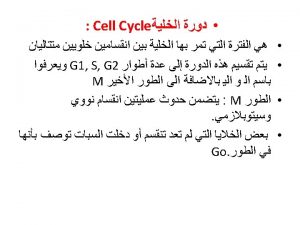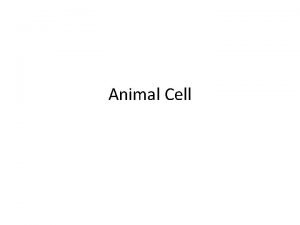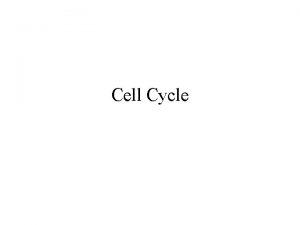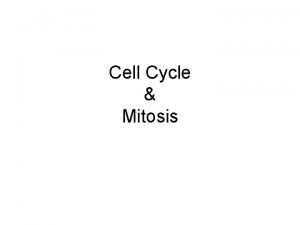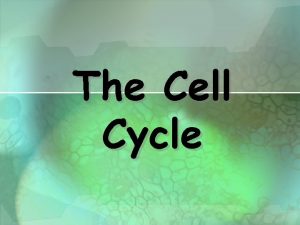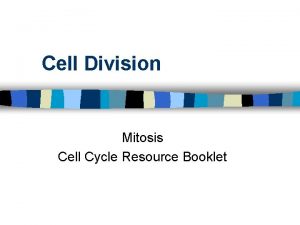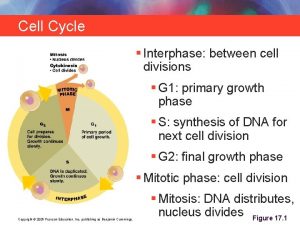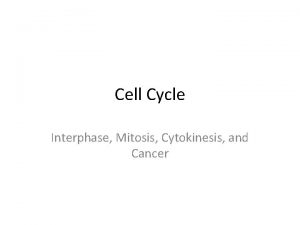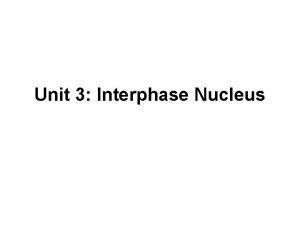The Cell Cycle Interphase Divided into 3 phases































- Slides: 31

The Cell Cycle



Interphase • Divided into 3 phases: G 1, S, and G 2 • During G 1 the cell is growing and maturing; if the cell will never divide, it will spent its life here (known as G 0) • During S, the DNA replicates • During G 2 the cell prepares for the division (makes proteins, etc. )

Mitosis • Mitosis is divided into 4 phases: prophase, metaphase, and telophase • You can remember interphase, prophase, metaphase, and telophase by IPMAT

Prophase • Nuclear membrane breaks down • Chromatin condenses into individual chromosomes (scattered throughout the cell) • Centrioles (in animal cells) begin to migrate to the poles • Spindles form and grow toward the cell’s center (equator)



Metaphase • Spindle fibers connect to the centromere of each sister chromatid • The spindle fibers pull the chromosomes to the metaphase plate or equator (the middle of the cell)




Anaphase • The spindle fibers pull at the sister chromatids to separate them at the centromere • Chromatids (now single stranded chromosomes) are pulled toward opposite ends of the cell (the poles)




Telophase • A nuclear membrane forms around each set of single stranded chromosomes • The chromosomes become long, stringy, and less distinct to reform chromatin • Spindle fibers break down • Telophase often overlaps with cytokinesis





Cytokinesis • Once the nuclear material is divided, the remainder of the cell divides during cytokinesis • In plant cells, a cell plate forms from vesicles that bud off the Golgi and will become a new cell wall • In animal cells, the cell membranes pinch in to form a cleavage furrow




What happens with the cell cycle isn’t regulated? • Internal signals within the cell can turn cell division off and on • Cells can detect the presence or absence of certain chemicals produced within the cell

• External signals can also turn cell division off and on • External signals are chemicals from outside the cell that the cell can detect

• A checkpoint is a critical point in the cell cycle where chemical signals can regulate the cycle


• Cancer is caused from a fault in controlling the cell cycle • Cancer begins when a single cell divides uncontrollably • Usually the human immune system will recognize the cell and destroy it

• If a cell continues to divide, it creates a mass of abnormal cells called a tumor • Tumors can either be: o malignant which impairs the function of organs and may move to other organs o benign which do not spread
 Why is cell division important
Why is cell division important Phases in interphase
Phases in interphase Cell cycle
Cell cycle A typical programming tasks can be divided into two phases
A typical programming tasks can be divided into two phases During interphase a cell grows duplicates organelles and
During interphase a cell grows duplicates organelles and Interphase animal cell
Interphase animal cell Mitosis cytokinesis
Mitosis cytokinesis Prokaryotes primarily reproduce
Prokaryotes primarily reproduce Interphase cell
Interphase cell Composite animal cell
Composite animal cell Go phase
Go phase Interphase cell
Interphase cell Interphase cell
Interphase cell Five phases of the cell cycle
Five phases of the cell cycle Cell cycle phases
Cell cycle phases Phase of mitosis
Phase of mitosis Cell cycle phases
Cell cycle phases Phases of the cell cycle
Phases of the cell cycle Mitosis
Mitosis Phases of the cell cycle
Phases of the cell cycle Cell cycle and cell division
Cell cycle and cell division Cell cycle and cell division
Cell cycle and cell division Biology.arizona.edu/cell bio/activities/cell cycle/01.html
Biology.arizona.edu/cell bio/activities/cell cycle/01.html Latin verbs are divided into
Latin verbs are divided into The bss can be divided into two parts
The bss can be divided into two parts Computer divided into two parts
Computer divided into two parts Seed plant are divided into
Seed plant are divided into Into what parts is scotland divided geographically
Into what parts is scotland divided geographically Part of earth
Part of earth In which region of india are
In which region of india are The aca is divided into
The aca is divided into The text is divided into 2 main themes:
The text is divided into 2 main themes:
